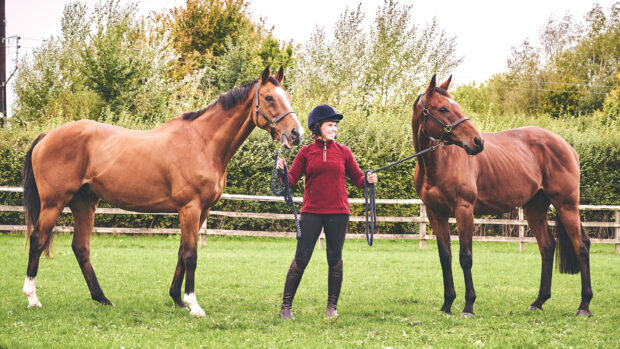Racehorses use less energy to gallop than has previously been thought, a study has shown.
Researchers from the Royal Veterinary College (RVC) used force plate technology, a measuring instrument which measures ground reaction forces, to “accurately measure” the external work involved in racehorses’ galloping.
A spokesman for the RVC said “This technique, which has never been used for such large animals at high speed before, showed that horses had much lower levels of external work — how much work the horse has to do to move relative to its environment — than had previously been reported when studied using different methods.”
A jockey rode seven racehorses over a “instrumented runway of sensors” planted under a section of the surface at the British Racing School in Newmarket, allowing researchers to directly measure “the external mechanical work of galloping”, by measuring the forces the horses exerted on the runway.
The study produced lower values than those previously reported for external work in galloping horses.
“Estimated via different methods, those previously reported high external work values are at odds with the fact that horses evolved to move at high speeds over long distances,” said the spokesman.

Can British sports stars beat the world’s fastest racehorse?
What happens when British sports stars take on one of the world’s fastest racehorses?

Olympic legend to train racehorse alongside eventing career
‘I had a think about it – and I can never resist a challenge!’

Subscribe to Horse & Hound magazine today – and enjoy unlimited website access all year round
“A high external work value would make moving over long distances much harder. The RVC’s new results support that thinking.
“The researchers were then able to calculate the apparent muscle efficiency of galloping horses by combining the external work values from this study with published values for metabolic work (the conversion of food into energy used by muscles) and internal mechanical work (how much work is needed to move the limbs relative to the body). They found that the horse’s efficiency values were between 37 and 46%.”
The spokesman said the study findings will provide “useful insight” into the movement of racehorses and contribute details towards explaining how racehorses can gallop “so efficiently” over long distances.
For all the latest news analysis, competition reports, interviews, features and much more, don’t miss Horse & Hound magazine, on sale every Thursday.




